This post may contain affiliate links. Please read our disclosure policy.
Tabouli (also spelled tabbouleh) is a traditional Lebanese salad recipe made with finely chopped parsley, mint, tomatoes, and soaked bulgur wheat. Seasoned with fresh lemon juice and a little bit of olive oil, this quick and easy salad is healthy and so delicious! Perfect with grilled meats or your next mezze platter.
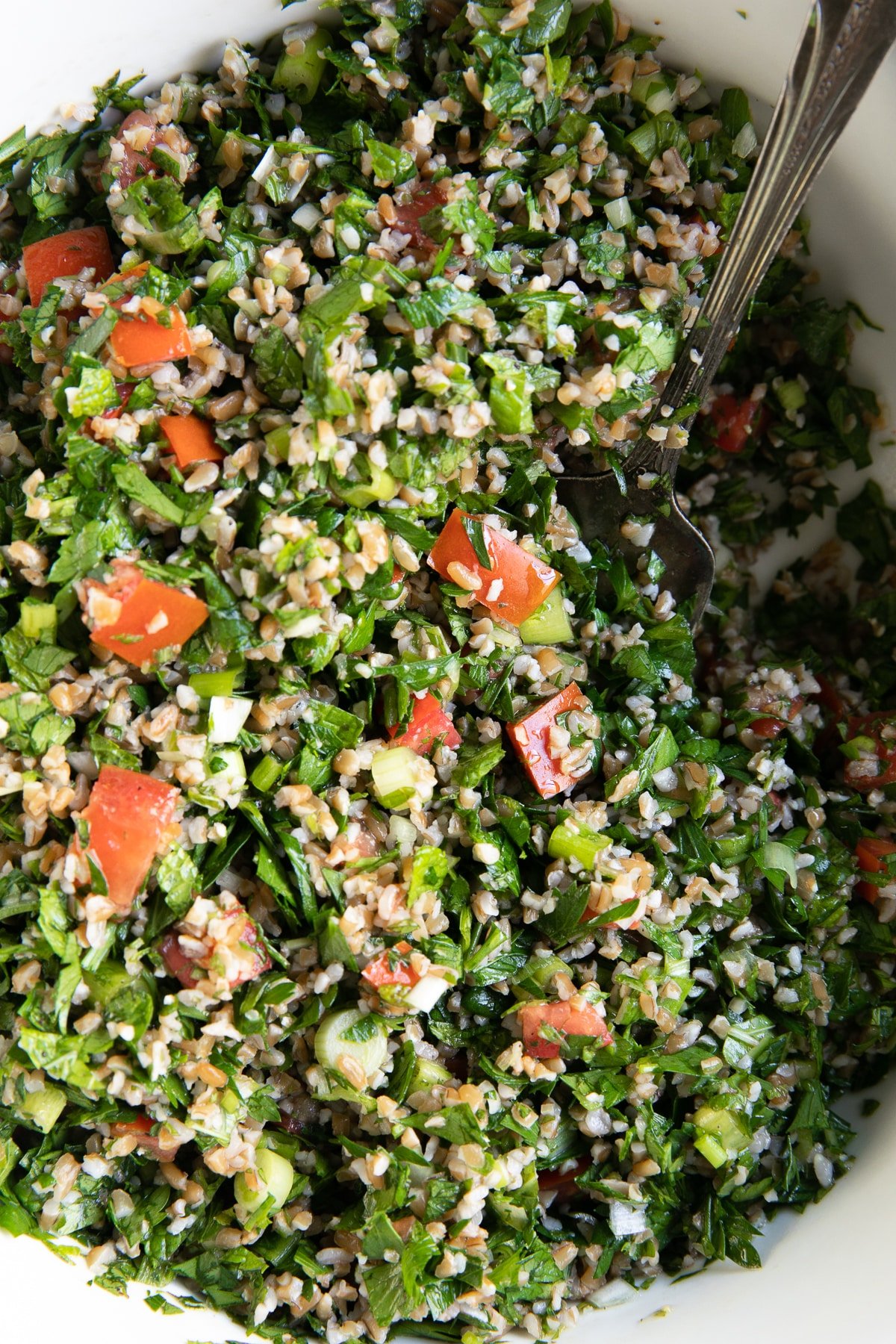
Table of Contents
What is Tabouli?
Tabouli (also spelled tabbouleh, tabouleh, or tabbouli) is an incredibly refreshing and delicious Middle Eastern salad made of fresh herbs like parsley and mint, tomato, green onion, soaked bulgur, fresh lemon juice, and olive oil.
Originating in the mountains between Lebanon and Syria sometime in the Middle Ages, tabouli is one of the Middle East’s most iconic dishes.
In countries such as Syria, Lebanon, Israel, Jordan, and Egypt, tabbouleh salad is often served as part of a meze (or mezze), a collection of small dishes. Dishes include baba ganoush, tzatziki, dolma, falafel, hummus, shish taouk, Muhammara, and pita bread.
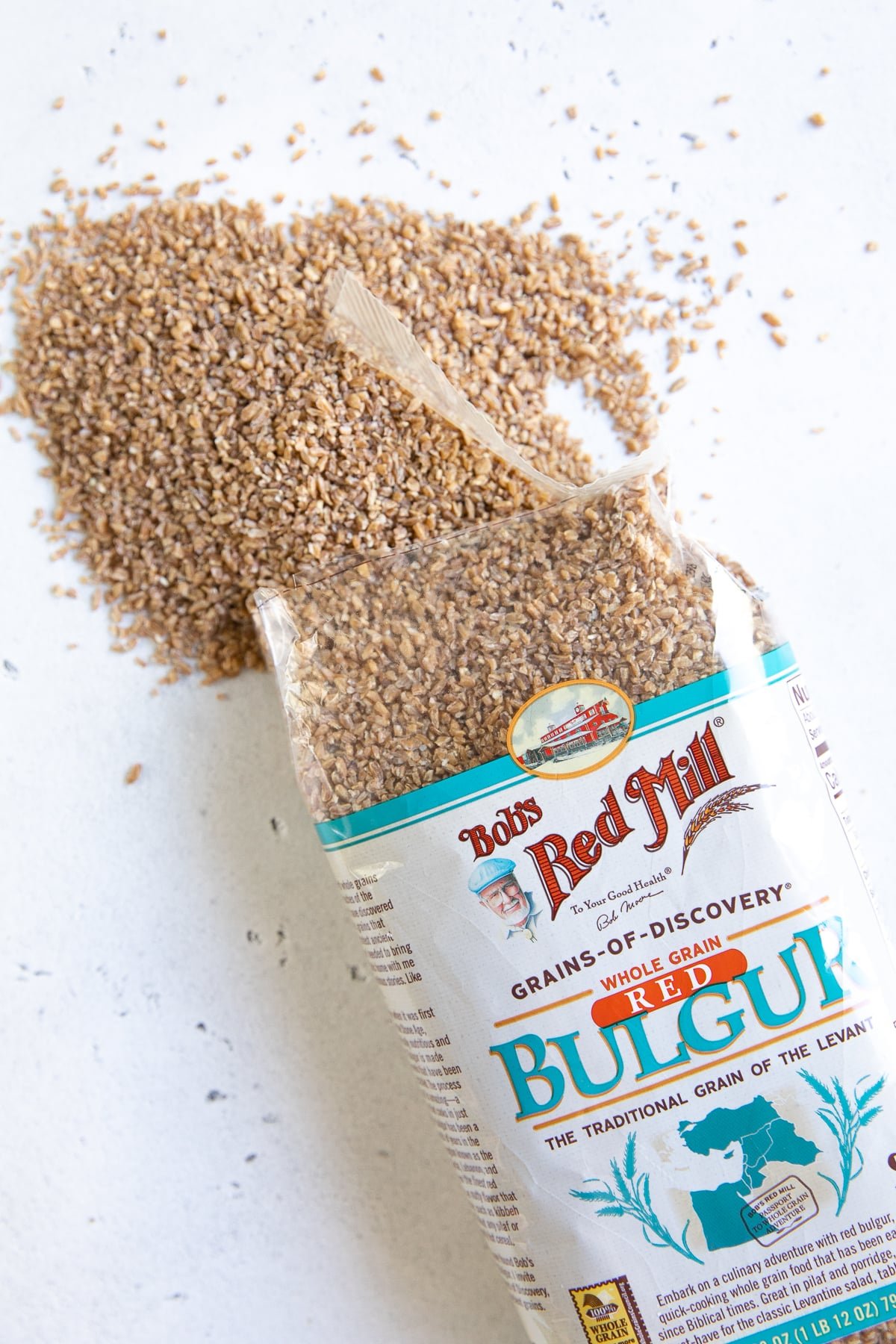
Key Ingredients
Find the printable recipe with measurements in the recipe card below.
- Bulgur – Bulgur comes from cracked whole-grain wheat kernels that are first parboiled and then dried before packaging. As a result, bulgur cooks much faster than other varieties of whole wheat such as wheat berries (the raw version) or freekeh (my personal favorite).
- Fresh Parsley – Tabouli is all about fresh parsley. In fact, it is the most important ingredient in this whole recipe. As such, buy the freshest you can find and buy lots of it. You’ll need approximately 3 cups of it after it’s been chopped! I have made this recipe with flat and curly parsley, and I prefer curly parsley or a mix.
- Fresh Mint – Fresh mint is also super important. While you won’t be adding as much mint as parsley, there is no substitute for fresh mint. Add more or less to suit your own personal tastes and preferences.
- Green Onions (scallions) – Green onions are pretty mild and add amazing flavor. You could add finely minced red onion, but I haven’t tried this personally, so I can’t really tell you if I would recommend it.
- Tomato – Tomatoes, especially if you can get your hands on some super fresh, fragrant, and in-season ones, are an amazing addition. They add a nice contrast to this very herb-centered dish.
- Extra Virgin Olive Oil – You really don’t need much as tabouli is meant to be light and fresh. You may use regular olive oil if that’s all you have available.
- Lemon Juice – Fresh lemon juice only. No concentrates.
- Salt and Black Pepper – You will need to add salt and pepper. No need to go crazy, but a teaspoon or so will help tie all the flavors together and help this salad shine.
Optional Additions
- Pomegranate Arils – Sweet little pomegranate gems either in place of the tomatoes or in addition to them, add a sweet twist.
- Garlic – But not too much. Maybe 1-2 cloves.
- Cucumber – Cucumber is a pretty popular addition. If you decide to add this crunchy veggie, I highly recommend dicing it into pieces just as small, if not smaller than, the tomatoes.
- Lettuce – Ok, so this isn’t really a variation as it’s quite common to see tabouli served with lettuce.
- Feta Cheese – A tangy contrast to all the herb flavors.
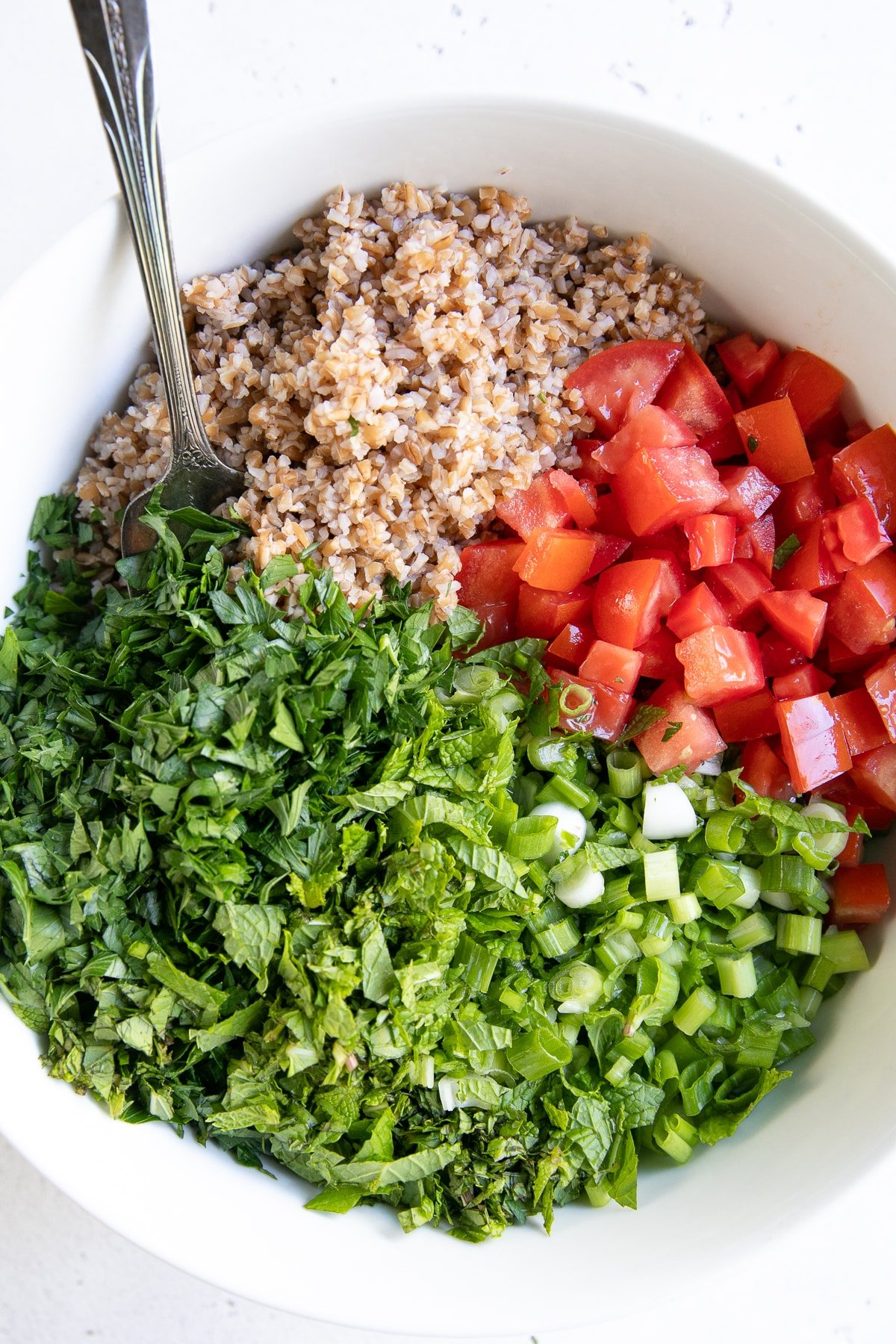
How to Make Tabouli Salad
1. Soak the bulgur: Soak the bulgur in 4 cups of boiling water (or chicken stock for more flavor). There is no need to cover or maintain a simmer over low heat, just add the boiled water, give it a stir, and soak. Soak for approximately 30 minutes or until softened. Drain through a fine-mesh strainer, pressing the bulgur gently with a paper towel to remove any remaining liquid. Set aside to cool.
2. Prepare the parsley and mint: Remove the thick stems from each bunch of parsley and mint. Either finely chop the herbs using a knife, or pulse the herbs, one bunch at a time, in a food processor until finely minced. Transfer to a large bowl.
3. Combine: Combine the cooled bulgur wheat with the minced parsley and mint. Add the green onions and diced tomatoes.
4. Prepare the “dressing”: In a small bowl whisk together the EVOO, lemon juice, salt, and pepper.
5. Assemble: Add the dressing to the salad and mix well to combine. Season with additional salt and pepper, to taste.
Is Tabouli Gluten-Free?
No. Traditional tabbouleh is made with bulgur which is made of wheat. Fortunately, there are a couple of really great alternatives to bulgur to make this recipe gluten-free.
Quinoa is the clear favorite and top choice among readers when it comes to bulgur substitutes. Take extra care, however, that your quinoa isn’t super water-logged or mushy. Cauliflower rice is another great alternative as it maintains texture, isn’t super flavorful, and can easily be riced to the same size as either bulgur or quinoa. Plus, it’s low in carbs, so bonus if you’re counting those.

Tips and Tricks
- For best results, cover and refrigerate your salad for 30 minutes before serving. It allows the flavors to really marinate together.
- Traditional tabouli salad is typically made primarily of fresh herbs with little speckles of bulgur mixed in. As tabbouleh has become more and more westernized, the bulgur (or quinoa, couscous, or cauliflower rice) has started to become an equal player or sometimes even dominating ingredient in the dish. In this case, there is definitely more parsley than bulgur, but likely more bulgur than you would find in traditional tabouli salad.
- Feel free to use curly or flat-leaf parsley (or a mix of both).
- Look for fresh and ripe tomatoes that are firm to the touch.
- Everything in this salad is meant to be fresh. Including the lemon juice.
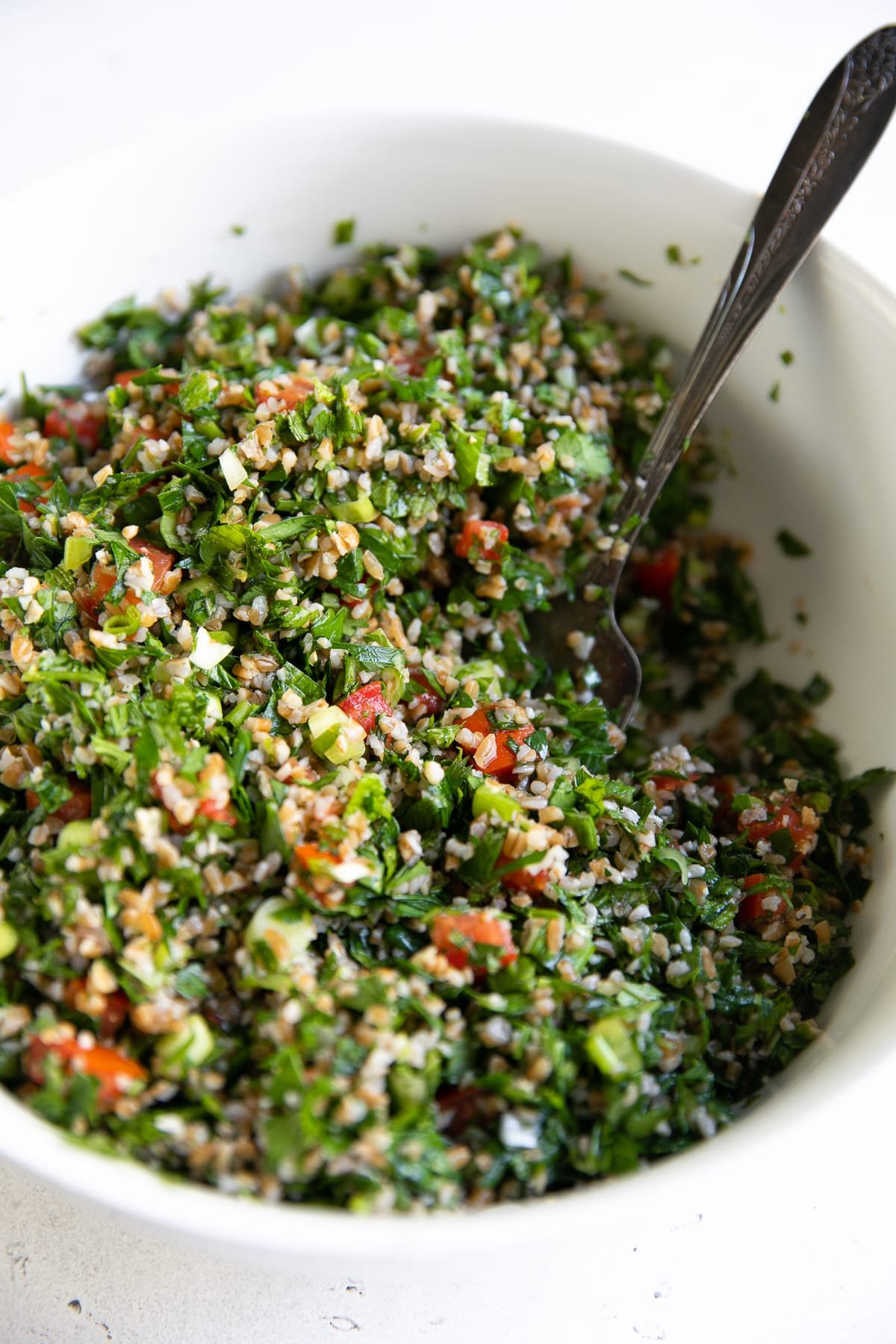
Storage
Before transferring leftovers, drain any excess liquid that may have settled at the bottom of your salad. Transfer leftovers to an airtight container and keep refrigerated for no more than 2 days.
Can You Freeze Tabouli?
No. Once thawed from frozen the parsley will be slimy and disintegrate, the tomatoes will be mushy and chalky, and the whole thing will taste (and smell) really awful.
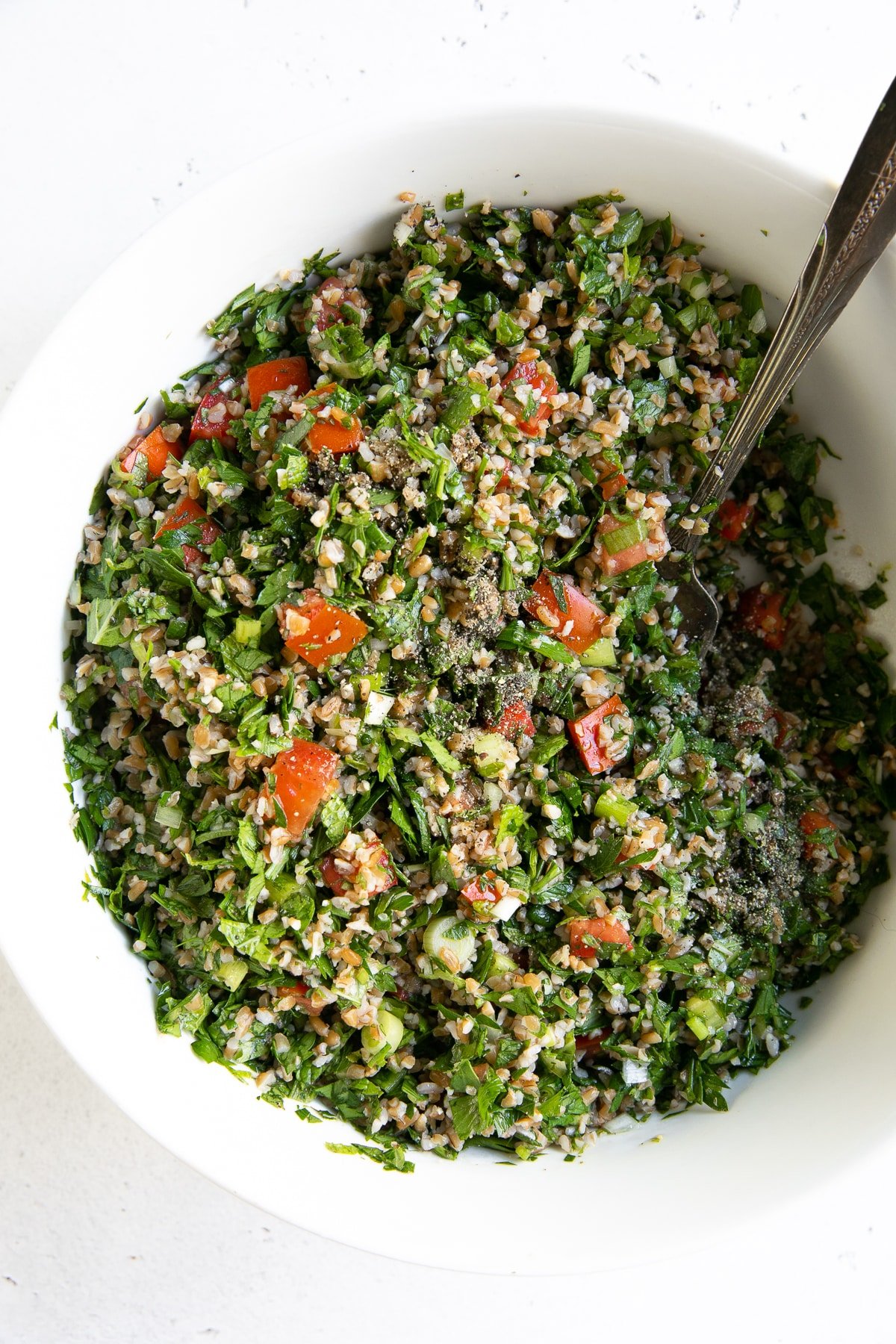
More Salad Recipes
- Tomato Basil Salad
- Cucumber Salad Recipe
- Easy Bean Salad Recipe
- Italian Pasta Salad
- Arugula Salad with Shaved Parmesan
- Caprese Salad Recipe (Insalata Caprese)
If you make this Easy Tabouli Salad Recipe, please leave me a comment below! I always love to read your thoughts and feedback!

Tabouli Salad Recipe (Tabbouleh)
Ingredients
- 1 cup fine bulgur wheat, uncooked
- 3 bunches fresh parsley, tough stems removed (approximately 3-4 cups when chopped)
- 1 bunch fresh mint leaves, tough stems removed (approximately 1/2 cup when chopped)
- ½ cup green onions, thinly sliced
- 2 tomatoes, cored, seeded, and diced
- 3 tablespoon extra virgin olive oil
- 3 tablespoon fresh lemon juice, plus more to taste
- salt + pepper, to season
Instructions
- Soak the bulgur. Start by soaking the bulgar in 4 cups of boiling water (or chicken stock for more flavor). Allow the bulgur to soak for approximately 15-30 minutes, or until softened. Drain through a fine-mesh strainer, pressing the bulgur gently with a paper towel to remove any remaining liquid. Set aside to cool.
- Prepare the parsley and mint. Cut the thick stems from each bunch of parsley and mint. Using a sturdy chef's knife, finely chop the remaining smaller stems and leaves into small pieces. As this can be somewhat time-consuming, you may also chop your parsley and mint in a food processor, one bunch at a time. Take care, however, not to over-process as it will turn into a thick paste. Transfer each bunch of minced parsley and mint to a large salad bowl.
- Combine the salad ingredients. To the bowl filled with chopped mint and parsley, and the soaked and cooled bulgur, green onions, and chopped tomatoes.
- Prepare the "dressing". In a small mixing bowl, whisk together the olive oil, lemon juice, salt, and pepper.
- Assemble. Pour the dressing over the salad and mix well to combine. Taste and add additional salt, pepper, or lemon juice, as needed.
Notes
- You may use curly parsley or flat-leaf parsley (or a mix of both).
- In traditional Lebanese tabouli, there is typically much more parsley in the salad than bulger.
- Bulgur is not gluten-free. Easily make this recipe gluten-free by replacing the bulgur with 1/2 cup uncooked quinoa or 1 1/2 cups cauliflower rice.
- For best results, cover and refrigerate your salad for 30-60 minutes before serving. It allows the flavors to really marinate together.
- Keep leftovers stored in an air-tight container in the refrigerator for up to 2-3 days.
Nutrition
Nutrition information is automatically calculated, so should only be used as an approximation.





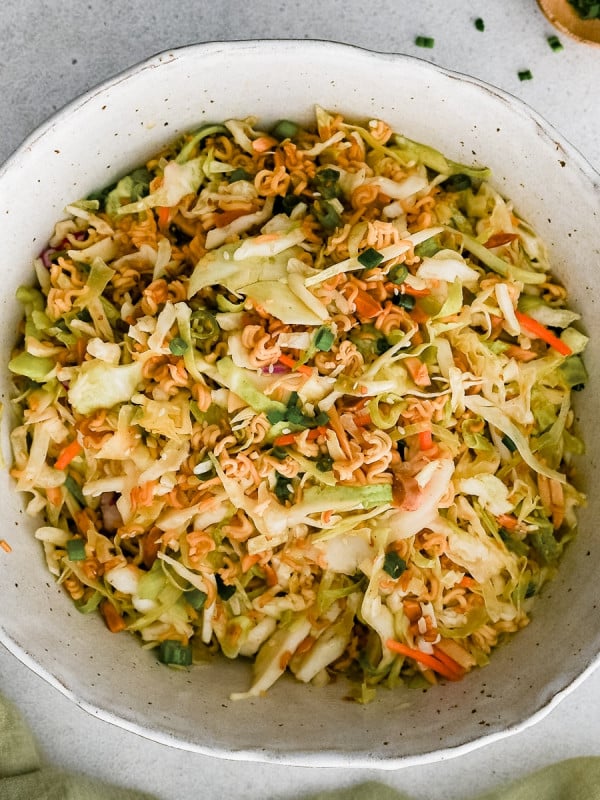








This is a quick, easy summertime salad. It is unbelievable to think that simple fresh ingredients can taste so good. I add some fresh garlic to this recipe to give it a little more flavor.
Thanks for the unbelievable review and rating, Vicki 😀
I have been making Tabouli Salad for 20 years…one of my favorite things. I make it exactly like your recipe. It is very heart healthy. Yum yum!